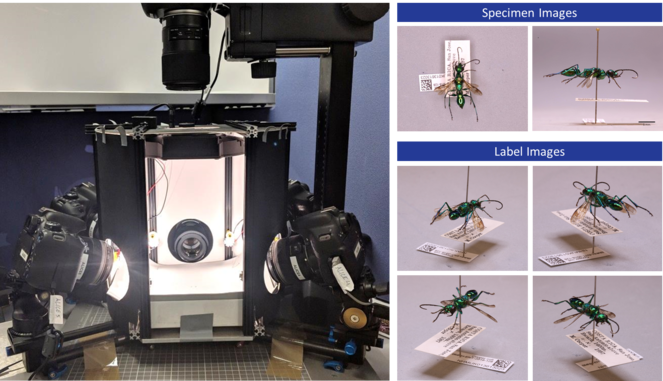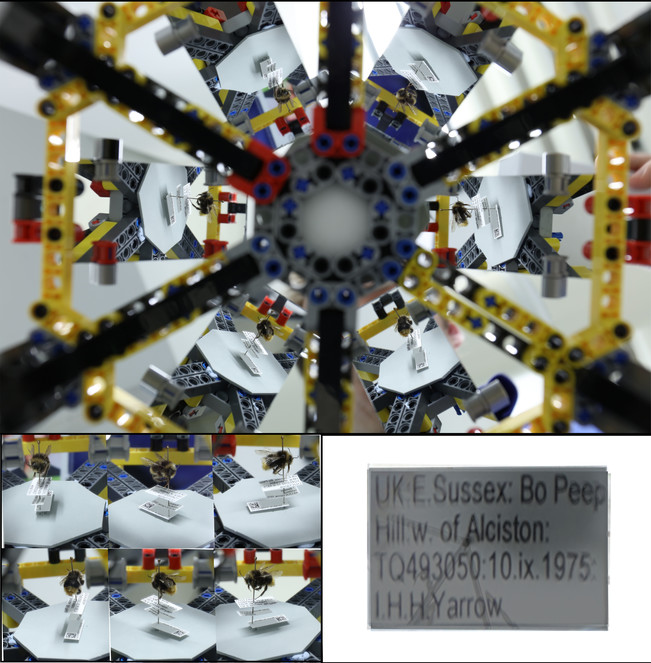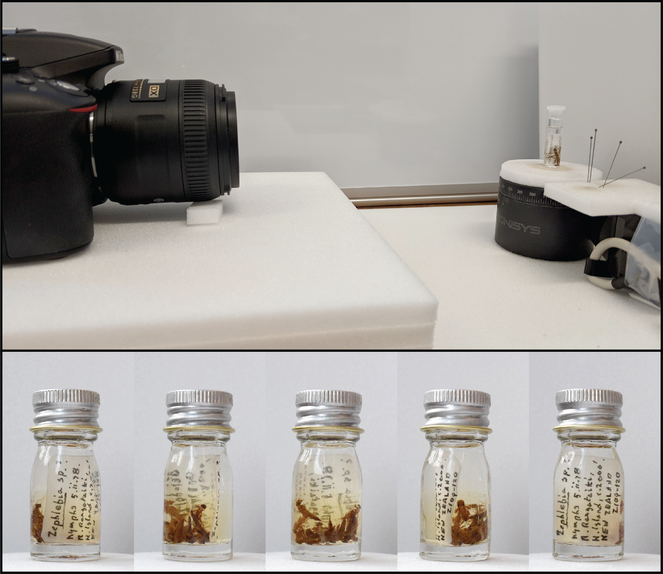|
Biodiversity Information Science and Standards : Conference Abstract
|
|
Corresponding author: Steen Dupont (steen.dupont@nhm.ac.uk)
Received: 11 Jun 2019 | Published: 13 Jun 2019
© 2019 Steen Dupont, Benjamin Price
This is an open access article distributed under the terms of the Creative Commons Attribution License (CC BY 4.0), which permits unrestricted use, distribution, and reproduction in any medium, provided the original author and source are credited.
Citation: Dupont S, Price BW (2019) ALICE, MALICE and VILE: High throughput insect specimen digitisation using angled imaging techniques. Biodiversity Information Science and Standards 3: e37141. https://doi.org/10.3897/biss.3.37141
|
|
Abstract
The world’s natural history collections contain at least 2 billion specimens (
In order to ramp up digitisation, we have developed ALICE for Angled Label Image Capture and Extraction from pinned insects. This multi-camera setup (Fig.
ALICE multi-camera setup in situ and examples of specimen overview and label images captured by each of the cameras. Note: example images are cropped for display.
We are continuing to refine hardware approaches to reduce specimen handling and extract data, for both human and machine interpretation, from labels without removing them from the object. More recently we are also trialing multiple mirrors in our Mirror Angled Label Image Capture Equipment (MALICE) (Fig.
The image output of an early mirrored ALICE prototype including manual crop and deskew of the six specimen views and a label stack consisting of the six superimposed extracted label crops.
Keywords
digitisation, pinned specimens, spirit preserved specimens, label extraction
Presenting author
Steen Dupont
Presented at
Biodiversity_Next 2019
Acknowledgements
We thank Louise Allan, Laura Balcells, Vladimir Blagoderov, Alice Butcher, James Durrant, Pieter Holtzhausen, Sameh Sharif, Steve Suttle, Glen Moor and Phaedra Kokkini for their contributions to developing and testing the workflows, hardware and associated software. These projects have received support from the European Union’s Horizon 2020 research and innovation programme under grant agreement No 777483 “ICEDIG”; the SYNTHESYS Project, http://www.synthesys.info/, which is financed by European Community Research Infrastructure Action under the FP7 Integrating Activities Programme (Grant agreement number 312253); and the Natural History Museum’s Digital Collections Programme.
References
-
Approaches to estimating the universe of natural history collections data.Biodiversity Informatics7(2). https://doi.org/10.17161/bi.v7i2.3991
-
iCollections methodology: workflow, results and lessons learned.Biodiversity Data Journal5:e21277. https://doi.org/10.3897/bdj.5.e21277
-
ALICE: Angled Label Image Capture and Extraction for high throughput insect specimen digitisation.SF Preprintshttps://doi.org/10.31219/osf.io/s2p73


